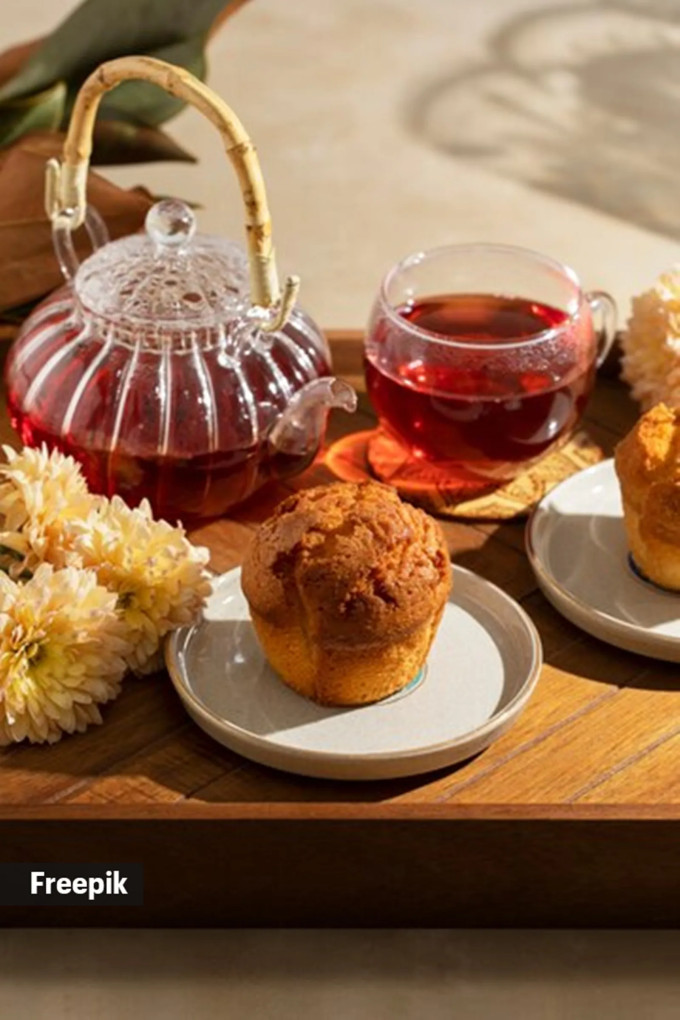Here’s how to have the perfect high tea experience, just like Sidharth Malhotra and Kiara Advani
Bollywood power couple Sidharth Malhotra and Kiara Advani recently added a touch of glamour to the quintessentially British tradition of high tea at Wimbledon.
Their outing at the prestigious tennis tournament caught the fans’ eye and highlighted the charm of high tea culture. This sophisticated ritual, steeped in history, offers more than just a mid-afternoon refreshment — it’s an art form that pairs delicate teas with an array of delectable treats.

View this post on Instagram
A post shared by Sidharth Malhotra (@sidmalhotra)
Kanikka Malhotra, consultant dietician and certified diabetes educator delves into the fascinating history of high tea and uncovers the secrets to creating perfect tea and food pairings that elevate this timeless custom.
High tea vs. afternoon tea
Malhotra says, “Let us first define the distinction between high tea and afternoon tea. High tea developed with the working class during the Industrial Revolution. It was a large evening meal, usually the main course of the day, served at 5 or 6 pm. It traditionally consisted of bread, cheese, veggies, and meat, all consumed at a high table.”
Afternoon tea, on the other hand, originated in the 1840s with the nobility, says Malhotra. Anna, the seventh Duchess of Bedford, “found the long wait between lunch and a fashionably late dinner (about 8 pm) rather difficult. So she started having a light afternoon snack of tea, bread, butter, and cakes.” This became a social rite among the higher classes, with tea served at a lower table.
From hunger buster to social statement
High tea remained a working-class staple, whilst afternoon tea became a mark of social standing, according to Malhotra. “The wealthy utilised expensive dinnerware, excellent finger sandwiches, and a variety of sweet sweets to demonstrate their refinement. Afternoon tea became a place to mingle, talk, and conduct business in a relaxed atmosphere.”
Evolution through the years
Over time, the distinction between high tea and afternoon tea became less clear. Afternoon tea included more savoury components, while high tea became less heavy. Today, Malhotra says, these names are frequently used interchangeably to describe a relaxing afternoon meal centred on tea, which includes finger snacks, scones, pastries, and, of course, a choice of teas.
“High tea has evolved into a pleasant opportunity to commemorate important anniversaries, reconnect with friends, or simply take a tasty and refreshing afternoon break. While the emphasis has shifted from pure sustenance to social enjoyment, the practice of gathering around a table for a shared tea session continues.”
Traditional and modern high tea treats that pair well with different types of teas
Here are some recommendations by Malhotra for the perfect high tea experience:
Black Teas (English Breakfast, Assam, Darjeeling): These robust teas hold their own against bold flavours.
Consider:
*Savoury: Mini quiches, cucumber sandwiches with smoked salmon, sausage rolls. The tea cuts through the richness of these bites.
*Sweet: Scones with clotted cream and jam (a classic!), fruit tarts. The tea balances the sweetness and cleanses the palate
Earl Grey: The bergamot notes in Earl Grey sing with citrusy and slightly sweet treats:
*Sweet: Lemon curd tarts, buttery shortbread cookies with orange zest. The tea complements the citrus flavors.
Green Tea: Green tea’s subtle vegetal notes pair beautifully with lighter options:
*Savoury: Smoked salmon blinis with cream cheese, delicate finger sandwiches with chicken salad. The tea enhances the freshness of the ingredients.
*Sweet: Matcha macarons, fruit salad with a light honey dressing. The tea allows the delicate flavours to shine.
 High tea remained a working-class staple, whilst afternoon tea became a mark of social standing (Source: Freepik)
High tea remained a working-class staple, whilst afternoon tea became a mark of social standing (Source: Freepik)
Modern twists and tea pairings
Floral Teas (Rose, Lavender): These fragrant teas beg for equally delightful accompaniments:
*Sweet: Mini rosewater cupcakes, lavender shortbread with honey glaze. The tea’s floral notes echo in the treats.
Fruity Teas (Peach, Berry): The vibrant flavours of fruity teas call for complementary sweet treats:
*Sweet: Mini cheesecakes with fruit compote, scones with raspberry jam. The tea elevates the fruit flavours without overpowering them.
Herbal Teas (Peppermint, Chamomile): These soothing teas pair well with lighter bites:
*Savoury: Mini vegetable pasties, small goat cheese and fig tarts. The tea complements the earthiness of the fillings.
*Sweet: Yogurt parfaits with granola and berries, honey cakes. The tea doesn’t compete with the delicate sweetness.
📣 For more lifestyle news, click here to join our WhatsApp Channel and also follow us on Instagram
Disclaimer: The copyright of this article belongs to the original author. Reposting this article is solely for the purpose of information dissemination and does not constitute any investment advice. If there is any infringement, please contact us immediately. We will make corrections or deletions as necessary. Thank you.
